Star Wars has been a pretty big fan of VR. On the PC, this meant smaller projects like Trials on Tatooine and Droid Repair Bay. On the PSVR and Quest, the projects were bigger, with titles like Vader Immortal and Tales from the Galaxy's Edge. All of them were pretty neat in their own way, even if every one of those experiences stuck to the traditional first-person viewpoint that's synonymous with VR. Star Wars: Beyond Victory sounds like another interesting VR experience, but the subtitle reveals that the brand is trying something new that the Quest 3 line of headsets was specifically built for: mixed reality.
Beyond Victory has three completely different modes. Adventure mode is where you'll spend the bulk of your time, and it is also home to the narrative. You play the role of Volo, a podracer who's been dealt an unlucky hand when their best friend died and the pod they were racing crashed and burned. Volo's luck turns around when they get a visit from Sebulba, the famous racer who was banned from the sport. In exchange for the part needed, Volo agrees to help Sebulba and his crew, but things have the potential to turn sideways.
The mode starts off with some racing, and this is where you'll discover the game's mixed reality gimmick. All of your racing action takes place on a 3D tabletop with a camera angle placed far above, as if your vehicle were being followed by a helicopter. The table can be raised or lowered, enlarged, or viewed from any distance, but your view will always be restricted to what the table can display at any moment. It's a neat gimmick that works fine, even if it feels like something you'd experience on a regular TV.
The racing will feel very familiar to genre fans. You control your pod with the left analog stick and accelerate with the right trigger. The A button grants a turbo boost for a limited amount of time, but you can wait a while for it to recharge, and the B button gives you the chance to deploy weapons or initiate tricks. It works well enough, but you can turn on motion controls if you want a more authentic pod racing experience.
The racing feels like a kart racer in terms of having a number of power-ups strewn across the tracks. You can run into objects and explode, but you will respawn on the track after a few seconds. In this regard, the game is generous, so you won't always explode after hitting things, and there aren't any "out of bounds" areas where you can't race. The pod can often feel so small that you'll sometimes lose sight of where it is, even though it is always in the same relative position. It would've been nice to get different camera angles, but that might be a design decision since it would break up the idea of the virtual tabletop being your main viewpoint.
Outside of the races, Beyond Victory moves on to a more traditional VR sequence, where everything around you is fully rendered. As expected, you have movement options to counter any sensitivities that players may have. A few things in each environment can be interacted with, but most of your time in this mode will be spent interacting with a few objects and conducting repairs on your pod. There's nothing new to see, but the mode is still enjoyable.
Despite this viewpoint being well-worn territory for the system, there are some parts that are either buggy or not well thought out. There are moments when characters will talk to you, and while you can move around during these times, the heads will not follow you around, so it can look like they're simply staring into the distance. You can pick up tools, but you can't holster them, so you can only drop them on the ground. Your extra appendages will sometimes hang on to tools for you, so you won't have to look around to see where you dropped them, but there are moments when the arms and tools won't appear. You can't trigger their appearance, so you have to hope that the correct tools show up when you need them.
Aside from that, there are moments when some objectives can't be completed. This is more noticeable when you work on your pod, as you might walk back and forth between different points instead of staying put to complete one section of your ship repair. This causes the game to not recognize you putting on the needed part for your repairs. With the game always closing when you exit any mode, having the game break like this can become rather annoying very quickly.
The final viewpoint is similar to the racing sequences, where you're once again looking at things via a 3D tabletop. You get more traditional controls, with the left analog stick controlling your movement, the right analog stick controlling the camera, and the B button acting as your contextual action button. For the most part, the viewpoint is used when traveling from one area to another, so there isn't too much to do except talk to a few people you meet along the way. One thing that the mode does is allow for cut scenes to play out without worrying about player placement. It also allows for various camera changes to fit the scene without disorienting the player in the process.
The game constantly switches between traditional VR and the tabletop view often when you aren't racing, which can be pretty neat considering how many other games on the system stick with one point of view. The transitions between both points of view aren't jarring and make perfect sense, since they're mostly split between the tabletop view for exteriors and the VR view for interiors. The only annoyance is the constant warning to have ample room around you when going into VR, but that's not really a big deal.
The overall experience is nice, but the game suffers from the same issue plaguing a majority of games on the Quest: The experience is very short. You can finish the campaign in roughly two hours, with a bulk of that time coming from cut scenes. You can eke out more time by going through every environment to complete special challenges that unlock stuff for the Playset mode, but that's about it. For most players, this is more of a "one and done" experience, but at least that experience is enjoyable while it lasts.
Arcade mode is the next mode, and it plays like a distilled version of the Adventure mode, with a primary focus on the races. While the mode doesn't feature multiplayer, it has online leaderboards for all of the available courses. This is a mode where you may not be spending as much time as you'd initially think, unless you are chasing lower times for leaderboard rankings. Part of that reason is because you'll need to go through all of Adventure mode to unlock all of the courses, and you'll play those exact same races rather than exploring any tracks that are exclusive to this mode. Another issue is the fact that there are only four courses, so the thrill of racing wears out very quickly unless, again, you're really into climbing the leaderboards.
Playset is the final mode, and it'll feel very familiar to those who have played with similar decorative mixed reality experiences, such as the one found in Pinball FX VR. With a view of your real surroundings, you open a box to see all of your figures and other accessories. You can take anything out of the box and place it anywhere in your environment. Any item can be cloned, and all of the figures have a good degree of joint manipulation. Aside from being able to pose the figures any way you want, you can clone them, so there are no limits to how many Darth Vader figures you can have in the world, for example. You can also add various effects and backdrops to re-create some free-floating action scenes and have them be saved anytime you return to the mode. It's neat all around, but the vehicles may feel unpredictable. The cool thing is that you can snag a number of vehicles and drive them around, as if they were RC cars. Their ability to detect environmental blockers like tables and walls is hit-and-miss, but it is neat to see the vehicles react to the real environment. The only knock is that you can't put any figures in each vehicle, since the scaling is off. Alas, you can't have C-3PO or the like riding around in a podracer.
The presentation is good, but it has some quirks. The graphics are strong, and there's no texture pop-in during any of the different exploration sequences. Racing also looks fine, but there are moments when the game pauses for a half-second, which breaks up the immersion since you don't see anything that should be taxing the system. The voice acting is excellent, and the music stands out because it sounds nice without referencing any past Star Wars TV shows or games or movies.
Star Wars: Beyond Victory is a neat experience. The Adventure mode does a good job of mixing together VR and mixed reality while telling a good story in the beloved universe. The racing is novel yet forgiving when you consider the viewpoint, while the Playset mode is pretty neat if you're into posing action figures in semi-ridiculous ways. Unfortunately, the entire experience is fun but pretty short (even by VR standards), making this feel like a fleeting experience.
Score: 7.0/10
More articles about Star Wars: Beyond Victory - A Mixed Reality Playset


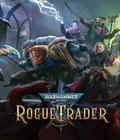

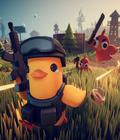
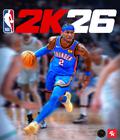
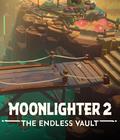

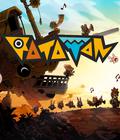


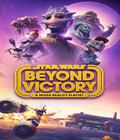 Step into the Star Wars galaxy with a new experience that blends immersive storytelling, a stellar cast, high-speed podracing and a fully interactive mixed-reality playset.
Step into the Star Wars galaxy with a new experience that blends immersive storytelling, a stellar cast, high-speed podracing and a fully interactive mixed-reality playset.





